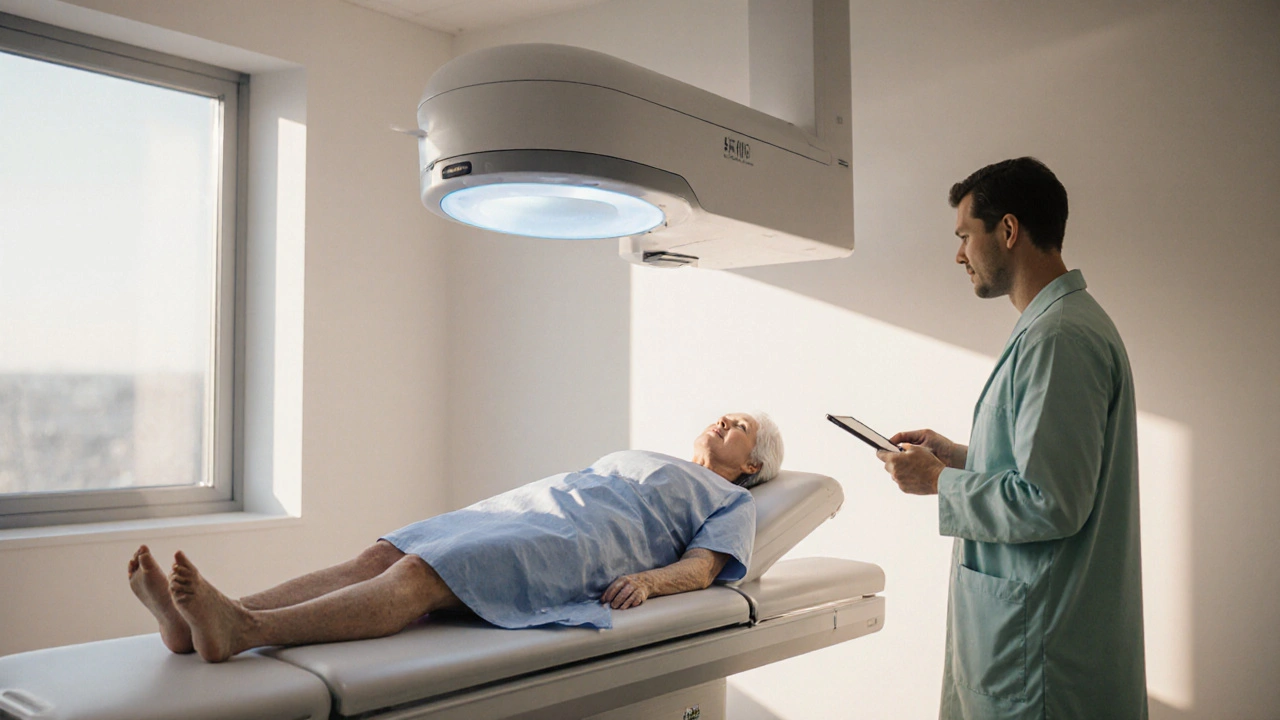Bone Health: Strengthening Your Skeleton with Science and Lifestyle
When we talk about bone health, the condition of your bones and their ability to stay strong and resilient. Also known as skeletal health, it depends heavily on nutrients, hormones and everyday habits. Key players like calcium, the mineral that forms the bulk of bone tissue and vitamin D, the vitamin‑like hormone that boosts calcium absorption drive the process. When this balance slips, a condition called osteoporosis, a disease marked by porous, fragile bones can develop.
Why Calcium Is the Foundation
Bone health requires adequate calcium intake. Adults need roughly 1,000 mg per day, climbing to 1,200 mg after age 50. Dairy products, fortified plant milks, leafy greens and sardines are everyday sources. If you skip these foods, your body pulls calcium from bone to keep blood levels stable, which weakens the skeleton over time. Simple steps—like adding a cup of yogurt to breakfast or sprinkling sesame seeds on salads—can keep your calcium pool full without counting every gram.
Bone health also hinges on vitamin D, because without it, calcium can’t be absorbed efficiently. Sunlight is the cheapest source: 10‑15 minutes of midday sun a few times a week usually supplies enough. In cloudy climates or for people with darker skin, supplements of 800‑1,000 IU daily are a safe backup. Too much vitamin D isn’t helpful; sticking to recommended doses avoids the rare risk of calcium buildup in the arteries.
Understanding Osteoporosis and Its Triggers
Osteoporosis is a chronic loss of bone density that makes fractures more likely, especially in the hip, spine and wrist. Risk factors include age, female sex, family history, low body weight and hormonal changes after menopause. However, lifestyle choices can tilt the odds. A diet low in calcium or vitamin D, smoking, excessive alcohol and inactivity are all modifiable contributors. Regular bone density tests after age 65 (or earlier if risk factors stack) catch loss before a break occurs.
Medication use can sneakily affect bone health. Loop diuretics like furosemide increase calcium loss in urine, while long‑term proton‑pump inhibitors (e.g., rabeprazole) may impair calcium absorption by reducing stomach acid. Steroids, often prescribed for asthma or autoimmune conditions, are notorious for accelerating bone loss. If you’re on any of these drugs, talk to your doctor about calcium and vitamin D supplements or alternative treatments.
Exercise: The Mechanical Boost Your Bones Need
Weight‑bearing activities—walking, jogging, dancing, resistance training—send gentle stress to bone, prompting it to remodel and strengthen. Even yoga poses that load the arms and legs, like Warrior II or Chair Pose, provide a low‑impact way to keep bone remodeling active. Aim for at least 30 minutes of moderate activity most days, and sprinkle in two sessions of strength training each week.
Beyond movement, nutrition matters. Magnesium, vitamin K2, and protein support the matrix that holds calcium crystals in place. A study on pesticide‑related anemia showed that iron deficiency can worsen overall nutrient absorption, indirectly hurting bone health. Including beans, nuts, and whole grains gives you the breadth of minerals needed for a solid framework.
Hormonal Balance and Special Populations
Endocrine disorders directly influence bone turnover. Hyperthyroidism, for example, speeds up metabolism and can lead to rapid bone loss, as highlighted in recent cancer‑risk research. Managing thyroid levels with medication, alongside calcium and vitamin D, helps protect the skeleton. Women approaching menopause should discuss hormone‑replacement options if they have early signs of bone thinning.
Older adults often face multiple challenges—reduced appetite, limited sun exposure, and polypharmacy. A tailored plan that combines a calcium‑rich diet, vitamin D supplementation, safe strength exercises, and regular monitoring can preserve independence and reduce fracture risk.
Quick Actions to Strengthen Your Bones
1. Check your daily calcium and vitamin D intake; add fortified foods or supplements if needed.
2. Schedule a bone density scan if you’re over 65 or have risk factors.
3. Review any long‑term meds with your physician; ask about bone‑protective alternatives.
4. Incorporate weight‑bearing exercise at least three times a week.
5. Limit smoking and alcohol, both of which speed up bone loss.
Armed with these basics, you’ll see how each piece—nutrients, hormones, activity, and medication management—fits into the larger puzzle of bone health. Below, you’ll find a curated collection of articles that dive deeper into specific drugs, dietary strategies, and lifestyle tweaks, giving you actionable insight to keep your skeleton strong for years to come.

Osteodystrophy in the Aging Population: Rising Health Concern
Haig Sandavol Oct 13 11Learn why osteodystrophy is a rising health issue for seniors, its key causes, detection methods, and practical steps to protect bone health as the population ages.
More Detail